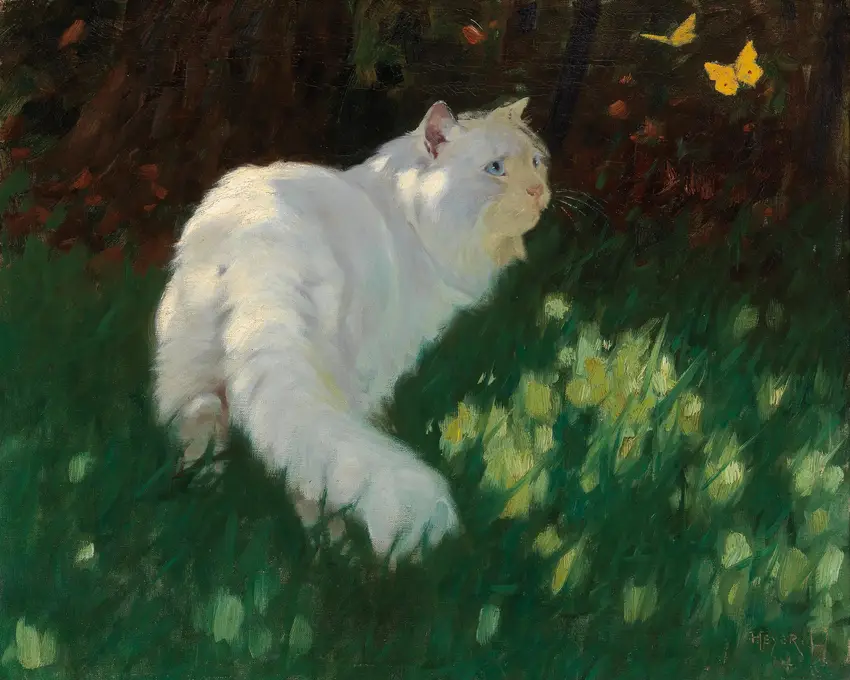Arthur Heyer
Arthur Heyer (1872–1931), German, A master of animal portraiture, particularly cats and dogs, this Hungarian painter brought an almost aristocratic elegance to his subjects. His work, often set against richly textured backgrounds, combined meticulous realism with a touch of romanticism, capturing not just the physical likeness but the distinct personality of each creature. Trained in Munich and influenced by the Old Masters, his technique was precise yet never stiff—brushstrokes softened fur into something almost tactile, while eyes gleamed with lifelike intelligence. Though less celebrated than some contemporaries, his paintings found favor among European nobility and bourgeoisie alike, who commissioned portraits of their prized pets. Beyond pure representation, there’s a quiet humor in his compositions: a terrier perched imperiously on a velvet cushion, or a cat mid-stretch, its tail curving like a comma against damask drapes. While his name rarely dominates art historical surveys, his legacy endures among collectors and animal lovers, where the charm of his work lies in its refusal to sentimentalize—even the fluffiest lapdog retains a hint of wildness.
-

White Cat and Butterflies
Arthur Heyer (German, 1872–1931)A white cat lounges among butterflies, their delicate wings contrasting with its soft fur in a moment of quiet fascination.
